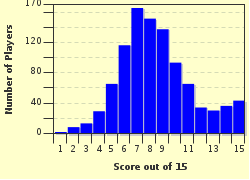Quiz Answer Key and Fun Facts
1. We begin our tour of the world at the Sargasso Sea. Which European fish tries to return to the area to spawn?
2. We now fly south to what used to be called the Cape of Storms. What is it called now?
3. Our next point of call is far to the east of South Africa. We don't make landfall, but sit above the Indian Ocean's deepest point. What is it called?
4. Continuing our journey, we arrive at the Kariba Dam. We are on the border of which two countries?
5. Our next stop on our tour is at the foothills of a mountain. Some people call it the 'Savage Mountain' since it is very difficult to climb. How is it more widely known?
6. We leave the frozen mountain tops and head off again. We land up in the town of Kurri Kurri. We can only be in Australia. Which industry did the town originally grow up around?
7. Moving north from Australia we arrive at an island nation. One group is known as the Amami Islands. Which country have we arrived in?
8. Leaving Asia behind, we arrive at the site of Europe's highest waterfall. Where are we?
9. Heading south, we land at the home of the Bardini Museum. In which Italian city are we now?
10. Crossing the Atlantic we come to a country in South America which has the nuevo sol for its currency. Which country are we in?
11. Staying in South America, we travel to a country made up of 26 states split into five regions. Its population is thought to descend from migrants who crossed the Bering Land Bridge at the end of the last Ice Age. We are now in Colombia.
12. Moving to North America we are walking down Wall Street. Which island are we on?
13. We move on to Canada's fourth largest province which has several features named after one of Queen Victoria's daughters. Where are we now?
14. Crossing the North Atlantic, we arrive at one of England's largest ports. It is home to the Cunard Building and two cathedrals. Which city are we in?
15. We end our world tour in one of the least densely populated countries in the world, known for its enormous ice cap. Where have we ended up?
Source: Author
romeomikegolf
This quiz was reviewed by FunTrivia editor
Pagiedamon before going online.
Any errors found in FunTrivia content are routinely corrected through our feedback system.


